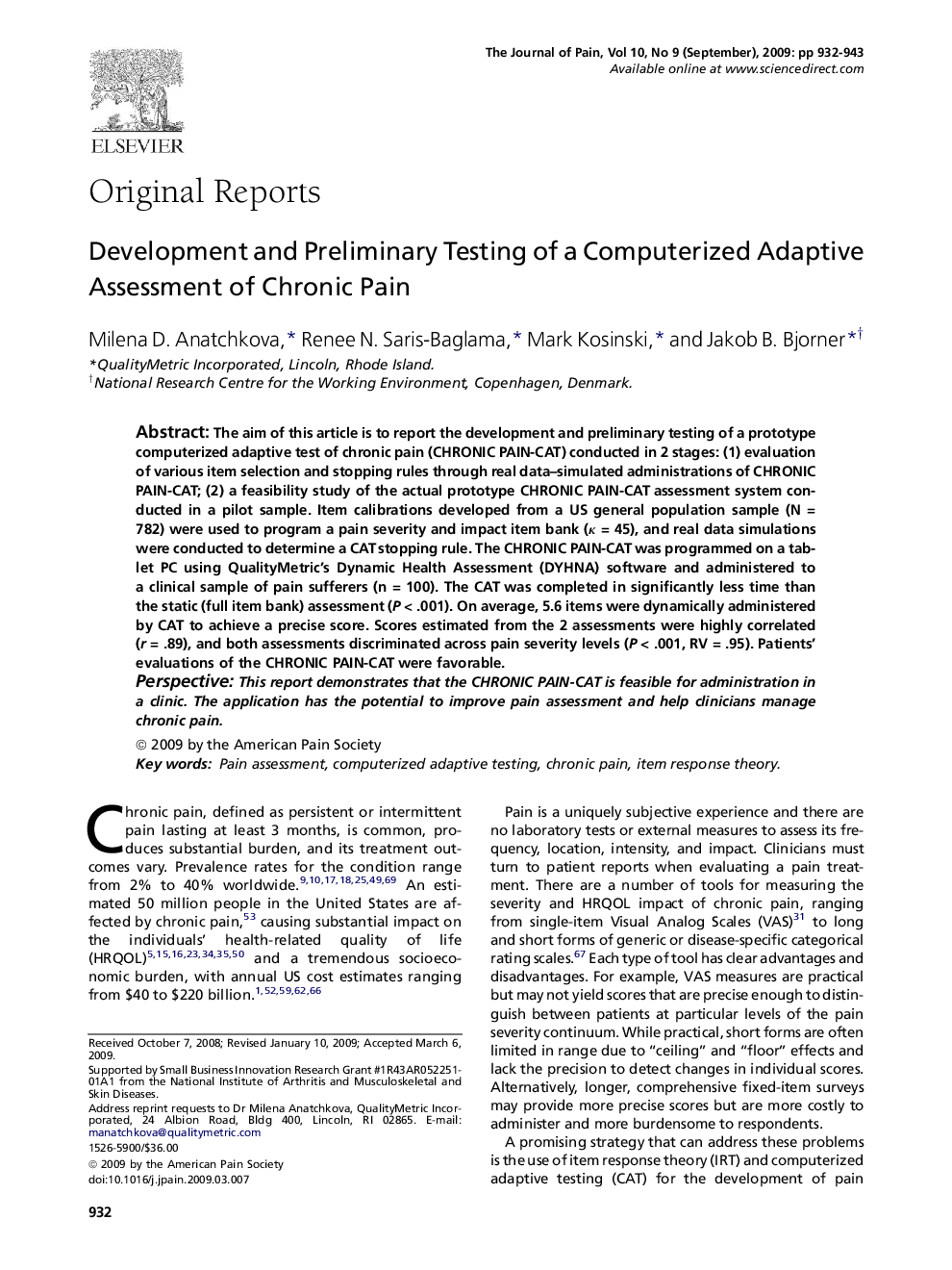| کد مقاله | کد نشریه | سال انتشار | مقاله انگلیسی | نسخه تمام متن |
|---|---|---|---|---|
| 2723403 | 1566810 | 2009 | 12 صفحه PDF | دانلود رایگان |

The aim of this article is to report the development and preliminary testing of a prototype computerized adaptive test of chronic pain (CHRONIC PAIN-CAT) conducted in 2 stages: (1) evaluation of various item selection and stopping rules through real data–simulated administrations of CHRONIC PAIN-CAT; (2) a feasibility study of the actual prototype CHRONIC PAIN-CAT assessment system conducted in a pilot sample. Item calibrations developed from a US general population sample (N = 782) were used to program a pain severity and impact item bank (κ = 45), and real data simulations were conducted to determine a CAT stopping rule. The CHRONIC PAIN-CAT was programmed on a tablet PC using QualityMetric's Dynamic Health Assessment (DYHNA) software and administered to a clinical sample of pain sufferers (n = 100). The CAT was completed in significantly less time than the static (full item bank) assessment (P < .001). On average, 5.6 items were dynamically administered by CAT to achieve a precise score. Scores estimated from the 2 assessments were highly correlated (r = .89), and both assessments discriminated across pain severity levels (P < .001, RV = .95). Patients' evaluations of the CHRONIC PAIN-CAT were favorable.PerspectiveThis report demonstrates that the CHRONIC PAIN-CAT is feasible for administration in a clinic. The application has the potential to improve pain assessment and help clinicians manage chronic pain.
Journal: The Journal of Pain - Volume 10, Issue 9, September 2009, Pages 932–943